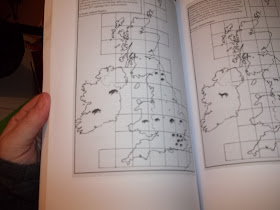Firstly, stop over feeding them and PLEASE do not get wild foxes to feed from your hand. For the first time ever I am seeing wild canids getting overweight when they should be lean and 100 kal a day should be enough for any fox.
I have seen several posts where people have fed foxes 2-3 times daily for months or a year or more and are concerned as they are moving home/going away for a few weeks or months. Other feeders suggest "ask a neighbour to feed them for you". NO. These are not pets. You have a pet dog and are moving home -do you leave it in the garden and move?
Secondly: stop offering foxes food to get them closer and closer to your house and then into it. The latest fad seems to be to sit in a living room and get a fox to come to you and take food. This could lead to the death of more than one fox.
Not everyone is a fan of dogs and cats let alone foxes. Neighbours complain that foxes from your garden are urinating on their front doors or defecating around their property. It does not matter if you have lived there for 15 years and fed foxes for the last six years and the neighbours have not been there a year. The neighbour contacts the RSPCA who tells them (because the RSPCA is NOT fox friendly) to contact the local authority. The local authority may warn you to stop feeding foxes. You continue then there are enough lowlife 'pest' controllers who will be more than happy to shoot the foxes for the councils money.
The biggest threat to foxes is becoming habituated to humans. There are a LOT of bad humans out there and an overly friendly fox is easy to catch, club and kill and the fur sells (yes, there is a vile snaring faction who kill foxes for fur in the UK). People are getting foxes to come into their homes with food. To sleep on garden and indoor furniture and now to come right into the house. You move or die what happens then? New house owners or neighbours are in their kitchen or living room and in walks a fox with a cub. "WILD ANIMAL!!" and then the call goes in. Bang! Bang! "nuisance wildlife" taken care of. Oh, and with "an over abundence of caution" any others in the area are also shot as potential hazards to humans.
Foxes may well get rid of rabbits, mice and rats on allotments -cheap control of "pests" that eat crops. Someone gives them something extra to supplement their diet. No problem -human and fox interaction is minimal and mutually beneficial.
Please do not encourage wild animals into your home even if they are "beautiful souls" because they are potentially also "dead before their time souls".
Another thing I see is the constant "Contact the Fox Man immediately!" or "You need to get in touch with the National Fox Welfare Society!" or "Call Fox Angels Foundation!" -these are all UK based but people in the United States and one in Malaysia were all told to do so (in fact commanded to do so by some) over a fox with mange which was already being treated. A limp, a squint, a different colour phase on a fox's coat (I am not joking) and everyone advises contacting one of the above groups.
Most send mange treatment out for free. How many out of the hundreds of the members on the fox groups actually donate to wildlife rescue centres? They cost thousands of pounds to run and most are struggling under the pressure of sick or injured foxes, orphan cubs and other wildlife. There is only so much they can do. They need cash. Money. Donations or one day you are going to find there is no one to call.
Ideally, you might think that veterinary colleges could get students to volunteer at these places -animal experience and do some good. I'm sure qualified veterinarians would also find it tax deductable and good publicity to volunteer aid. However, as two senior vets told me (I will combine both statements as they were almost the same): "Being a veterinarian is an occupation -a business. You are in the profession to earn a living and you make a good living from pet cats, poodles and budgies not wildlife; who is going to pay the bills?"
If there was a scheme nationally involving volunteers you could probably prevent outbreaks of mange by 90% in 10 years. On a local level if you look at the two cities with the largest urban fox populations -Bristol and London- where there are many fox feeders so foxes could be located and treated with their help then in Bristol mange could probably be reduced by 95% in five years. When you realiose how big a problem mange is and that there has never been a campaign or effort to treat it nationally or locally then that would be an achievement of international wildlife importance.
Any vets out there up to volunteer?
Another way British foxes can be helped and studied is via DNA research into their origins (a long story but covered in The Red Paper). Hayley de Ronde of Black Foxes UK is prepared to carry out a study of fox hair but that requires funding which is not there for UK wildlife research even if it would also be of great importance internationally.
A fox loving multi millionaire is never around when you need one.
Please mull over this post and ask yourself how you can help.
_________________________________________________________________
Red Paper 1: Foxes, Wolves, Coyotes & Jackals in the UK













No comments:
Post a Comment